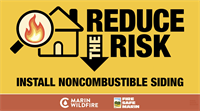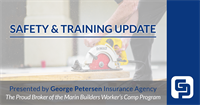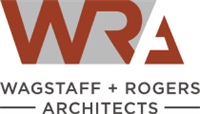New Reduce the Risk Video by Fire Safe Marin
We’re excited to share a new video featuring MBA member Kazoo Shearman (Shearman Builders), walking through the installation of noncombustible fiber cement siding as part of a targeted wildfire retrofit. In this project, the homeowner focused on the lower portion of the wall—where ember exposure is highest— installing Hardie® siding within their budget. The video breaks down how flashing, fiber cement siding, and weather detailing work together to improve ember resistance and all-weather
Safety & Training Short: Floods - Health Hazards
Objective: To assure familiarity and understanding of common health hazards present in flooded areas. Floods are extremely dangerous to life and health, even in their aftermath. Everyone involved in response and recovery operations must be aware of the hazards they face. ExhaustionHypothermiaHeat IllnessContaminated WaterClick here to download the training short in EnglishClick here to download the training short in Spanish Safety & Training Shorts provided by George Petersen Insurance Agency, the proud
Understanding the Wildland Urban Interface (WUI) Requirements by Eric Rogers, Wagstaff + Rogers Architects
Table of ContentsUnderstanding the Wildland Urban Interface (WUI) RequirementsThe Recent Change: Why Marin County Banned Wood Exteriors for 2026What This Means for Builders, Homeowners, and BuyersArchitecture in WUI ZonesMarin in ContextNot Just a Local TrendWhat This Means for ClientsAdapting to the Realities of WUI LivingUnderstanding the Wildland Urban Interface (WUI) Requirements Learn how Marin County’s updated 2026 WUI requirements impact new construction, remodels, siding materials, and
Safety & Training Short: Electrical Safety - Voltage Testing
Hazards of voltage testing: Anyone performing electrical measurements must understand the safety hazards associated with this task and be certain that their tools meet code requirements. Persons testing voltage on energized equipment or for verification on locked out equipment can be injured if test instruments are not appropriately applied or the wrong instrument is used for the job. Make sure your instrument is appropriately rated for the equipment being tested:Qualified persons need to be trained to
Fire Smart Yards: A Visual Guide for Landscapers - A FIRE SAFE MARIN Publication
Check out the Fire Smart Yards flipbook – a bilingual (English + Spanish), photo-rich guide to designing beautiful, fire-resilient landscapes. Created with input from local landscape professionals, this flipbook offers practical tips and inspiring visuals on mulch, spacing, tree care, and more. Whether you’re a seasoned pro, a hobby gardener, or just curious about fire-smart landscaping, this is for you. View It here. This guide provides a brief overview of the main principles of fire smart landscaping,
2026 Employee Wellness Benefits Trends
Before we know it, the holiday season will be over, and we'll be starting 2026. As 2025 draws to a close, it’s time to look ahead. The landscape of employee wellness benefits is rapidly evolving, driven by the need for more comprehensive, personalized support. Understanding these trends now will ensure your organization is prepared for 2026.Trend 1: Holistic, Individualized Care The future of benefits is holistic, with a renewed and necessary focus on financial and mental health.Addressing the Financial





